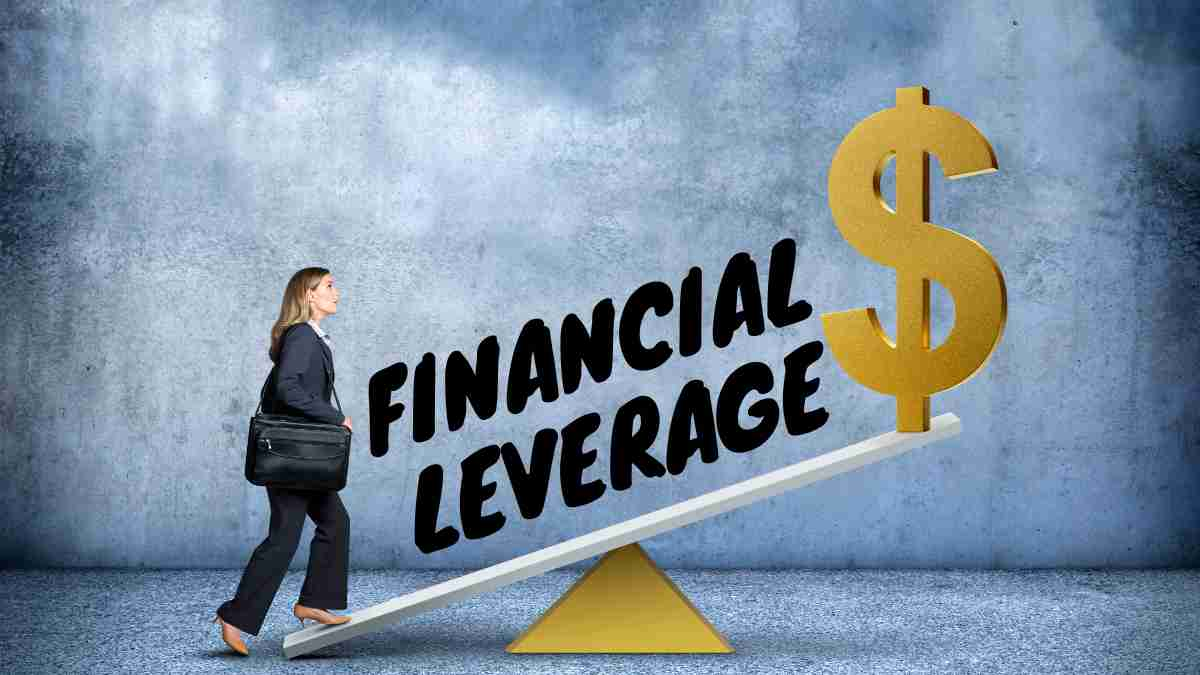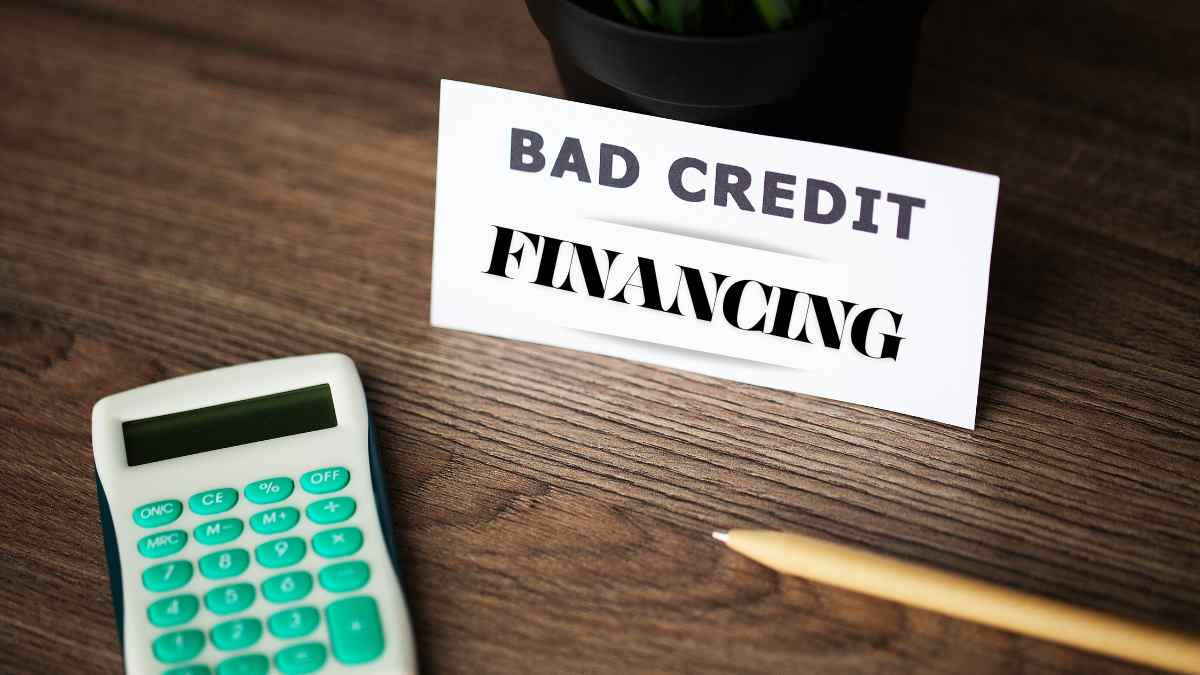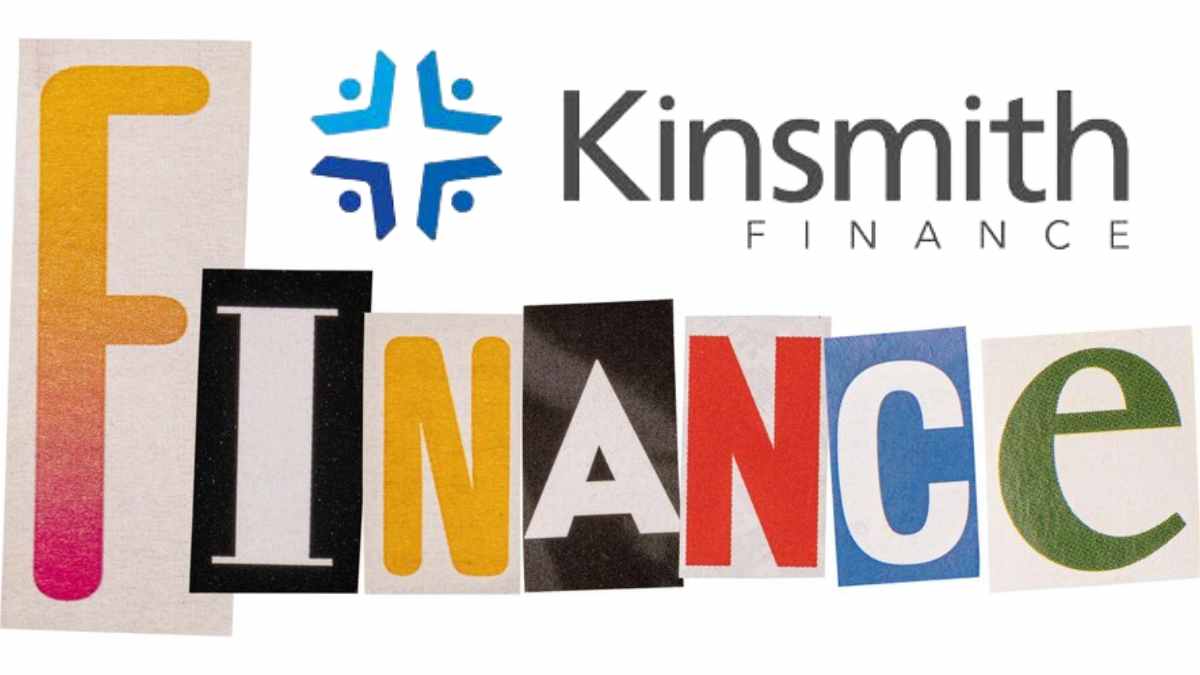Finance
Mastering Financial Leverage: Strategies for Amplifying Investment Returns

Welcome to the world of financial leverage, where savvy investors have discovered a powerful tool for maximizing their returns. If you’re ready to take your investment game to the next level, then you’ve come to the r ight place! In this blog post Lendai.us delve into the fascinating realm of financial leverage and explore =strategies that can help amplify your investment returns.
But first, let’s demystify what exactly financial leverage means. Think of it as a way to supercharge your investments by borrowing money or using other people’s funds. By doing so, you can potentially magnify both gains and losses – it’s like having a turbo boost for your portfolio!
Are you curious about the different types of financial leverage? Want to know why some experts swear by its advantages while others approach it with caution? We’ll cover all that and more in this comprehensive guide.
So get ready to unlock the secrets behind successful leveraging strategies and discover real-life examples where investors have made unprecedented gains. But remember: with great power comes great responsibility! We’ll also highlight common mistakes that could trip up even seasoned investors.
Whether you’re new to investing or looking for ways to maximize your current portfolio, learning how to master financial leverage is essential knowledge in today’s dynamic market. So buckle up and prepare yourself for an exciting journey into the world of amplified investment returns!
Types of Financial Leverage
When it comes to financial leverage, there are several types that investors can utilize to amplify their investment returns. One common type is operating leverage, which involves increasing sales revenue while keeping fixed costs constant. This allows for higher profit margins and a boost in overall return on investment.
Another type of financial leverage is capital structure leverage, which involves using debt financing to fund investments instead of relying solely on equity. By borrowing money at a lower interest rate than the potential return on investment, investors can increase their overall profitability.
Additionally, there is market timing leverage, where investors take advantage of opportunities in the market by buying or selling assets at strategic times. This can lead to significant gains if timed correctly.
Furthermore, there is also product mix leverage, where investors focus on high-margin products or services that generate more revenue compared to their costs. By optimizing the product mix within an investment portfolio, investors can achieve greater returns.
Each type of financial leverage has its own set of advantages and risks that need to be carefully considered before implementing them into an investment strategy. It’s important for investors to understand these different types and choose the ones that align with their risk tolerance and goals.
In conclusion, by understanding the various types of financial leverage available,
investors have the opportunity to enhance their returns. However, it’s important for individuals to weigh these strategies against their risk appetite and conduct thorough research before diving in. Ultimately, each investor should assess whether utilizing financial leverage aligns with their long-term objectives and consult with a professional advisor if needed
Advantages and Risks of Using Financial Leverage
Financial leverage can offer numerous advantages to investors, but it is important to be aware of the potential risks involved. One major advantage is the ability to amplify investment returns. By using borrowed funds, individuals or businesses can invest in larger assets or projects than they could afford on their own. This allows them to potentially earn higher profits if the investment performs well.
Another advantage of financial leverage is increased diversification. By leveraging investments, individuals can spread their risk across a wider range of assets. This reduces their exposure to any single investment and helps protect against losses.
However, it’s crucial to understand that leveraging investments also comes with risks. One significant risk is the potential for magnifying losses if an investment doesn’t perform as expected. Since borrowed money must eventually be repaid regardless of how an investment performs, a decline in value could result in substantial financial loss.
Additionally, using financial leverage typically involves paying interest on borrowed funds. If interest rates rise significantly or unexpectedly, this can increase borrowing costs and put additional strain on finances.
Furthermore, excessive reliance on leverage can lead to high levels of debt and make individuals or businesses vulnerable during economic downturns or market fluctuations.
While financial leverage has its advantages in terms of amplifying wealth creation opportunities and diversification benefits; understanding the associated risks and managing leverage responsibly are key considerations for successful implementation.
Strategies for Utilizing Financial Leverage
When it comes to utilizing financial leverage, there are a variety of strategies that can help amplify your investment returns. One effective strategy is using margin trading, which allows you to borrow funds from your broker to invest in securities. By leveraging your capital with borrowed money, you can potentially increase your profits if the investments perform well.
Another strategy is investing in real estate through mortgages or other forms of debt. Real estate has historically been a solid investment option and leveraging it with debt can further enhance potential returns. However, it’s important to carefully analyze the market and property values before making any decisions.
Additionally, diversification is key when utilizing financial leverage. Spreading out your investments across different sectors or asset classes can help mitigate risks associated with leverage. This way, if one investment doesn’t perform as expected, others may counterbalance the losses.
Furthermore, timing plays a crucial role in leveraging investments effectively. It’s essential to closely monitor economic trends and take advantage of opportunities when they arise. For instance, during periods of low interest rates or market downturns where asset prices are depressed, borrowing at favorable terms and investing in undervalued assets could yield higher returns over time.
Risk management should always be a priority when employing financial leverage strategies. Setting stop-loss orders or having an exit plan in place can protect against excessive losses if the market goes against your predictions.
Remember though; while these strategies have the potential for increased profits, they also involve higher levels of risk compared to unleveraged investments. Careful consideration and thorough analysis are necessary before implementing any leveraged investment strategy.
Real-life Examples of Successful Use of Financial Leverage
- Real Estate Investments
One of the most common examples of successful use of financial leverage is in real estate investing. Investors often put down a small percentage of the property’s purchase price as a down payment and borrow the rest from a bank or other lenders. By using leverage, investors can amplify their returns when property values increase over time.
- Private Equity Deals
Another example is private equity firms that acquire companies with borrowed money and then work to improve their operations and profitability. These firms use leveraged buyouts (LBOs) to finance these acquisitions, allowing them to control larger businesses with relatively less capital investment.
- Hedge Funds
Many hedge funds also employ financial leverage strategies to maximize returns for their investors. They may borrow money at low interest rates to invest in various assets, such as stocks, bonds, or derivatives, aiming for higher gains than the cost of borrowing.
- Margin Trading:
Individual investors can also utilize financial leverage through margin trading in the stock market. By borrowing funds from brokers, they can purchase more shares than they could afford with just their own capital. If the stock price rises significantly after buying on margin, they stand to make substantial profits.
- Venture Capital Funding:
Startups seeking funding often turn to venture capitalists who provide capital in exchange for equity ownership or convertible debt instruments like warrants or convertible notes a form of leveraging investments by giving up future potential value for immediate financing needs.
These are just a few examples showcasing how successful use of financial leverage has helped individuals and organizations achieve significant returns on investment across different industries and asset classes.
Common Mistakes to Avoid when Leveraging Investments
When it comes to leveraging investments, there are certain common mistakes that investors should be mindful of in order to maximize their returns and avoid potential pitfalls. One of the most common mistakes is overleveraging, which occurs when an investor borrows too much money to invest without considering the potential risks involved. This can lead to significant losses if the market doesn’t perform as expected or if interest rates increase.
Another mistake to avoid is not having a clear exit strategy. It’s important for investors to have a predetermined plan for when they will sell their leveraged positions in order to lock in profits or cut losses. Without a well-defined exit strategy, investors may find themselves holding onto leveraged investments for too long, potentially exposing themselves to unnecessary risk.
Lack of diversification is also a mistake that investors should steer clear of when using financial leverage. By putting all their eggs in one basket, so to speak, investors increase their exposure and vulnerability if that particular investment doesn’t perform well. Diversifying across different asset classes and sectors can help mitigate this risk.
Furthermore, failing to fully understand the terms and conditions of the leverage being used can result in unintended consequences. Investors must carefully read and comprehend all loan agreements or margin requirements before entering into any leveraged investment transactions.
Emotions can play a detrimental role when it comes to leveraging investments. Making decisions based on fear or greed rather than rational analysis can lead to poor outcomes. It’s essential for investors utilizing financial leverage to remain disciplined and stick with their predetermined strategies regardless of short-term market fluctuations.
To avoid these common mistakes when leveraging investments requires careful planning, research,and discipline on behalf of the investor.
Conclusion
After exploring the concept of financial leverage, understanding its different types, and discussing both the advantages and risks associated with it, you might be wondering if leveraging your investments is the right move for you.
The decision to use financial leverage ultimately depends on your individual circumstances, risk tolerance, and investment goals. It’s important to carefully consider the potential benefits that can come from amplifying your returns as well as the inherent risks involved.
If you have a solid understanding of how leverage works and possess sufficient knowledge and experience in investing, it may be worth exploring strategies that incorporate financial leverage. However, if you are new to investing or have a low-risk tolerance, it may be wise to approach leveraging cautiously or even avoid it altogether.
Before diving into leveraging investments, ensure that you thoroughly analyze your own financial situation and objectives. Consider consulting with a qualified financial advisor who can help assess whether utilizing leverage aligns with your overall investment strategy.
Remember that while using financial leverage has the potential to enhance profits significantly, it also magnifies losses when things don’t go according to plan. Therefore, careful consideration should always be given before deciding whether or not to employ this strategy.
In conclusion (without using those exact words), mastering financial leverage requires knowledge, discipline and an honest evaluation of one’s risk appetite. While successful utilization of leveraged investments has generated substantial returns for many individuals and businesses over time; there are no guarantees in any form of investing.
By educating yourself about various strategies for utilizing financial leverage effectively while avoiding common mistakes; you will be better equipped to make informed decisions regarding its implementation in your own investment portfolio.
Ultimately though only after evaluating all factors- including personal circumstances goals as well possible downsides- should anyone decide if employing this powerful tool called “financial” makes sense them!
FAQs
What is financial leverage?
The term “financial leverage” describes the strategy of raising an investment’s prospective return by making use of borrowed money or debt. Leverage is the practice of increasing an investment’s or a company’s prospective profit by borrowing money to do so.
How does financial leverage work?
A person or business may increase their prospective return on investment (ROI) by using borrowed money to invest in assets via financial leverage. When the investment’s returns exceed the cost of borrowing, this strategy entails taking on more debt in order to increase the investment’s returns.
What are the advantages of using financial leverage?
Leverage allows investors to potentially increase their returns on investment, which is its main benefit. The capacity to manage a wider range of assets with a lower initial investment may increase returns for investors. Be warned, though: it may amplifies losses just as much as profits.
What are the risks associated with financial leverage?
The heightened vulnerability to possible losses is one of the key dangers of financial leverage. Borrowed money puts the investor at risk more than their own money would if the investments don’t work out. Furthermore, if debt obligations are not satisfied, there is a chance of experiencing financial hardship and greater interest payments.
How can individuals or businesses effectively manage financial leverage?
Financial leverage management requires meticulous preparation and evaluation of potential dangers. Over-leveraging to the point that debt obligations become impossible to satisfy is not an option; rather, a healthy balance between equity and debt should be maintained. An important part of managing leverage well is having a strategy to return borrowed cash, investing in a diversified portfolio, and keeping yourself updated about market circumstances.
Finance
https://thetechijournal.com/onyx-shower/

In House Financing Cars! Are you dreaming of cruising around town in your dream car, but struggling to secure financing? In-house financing could be the solution you’ve been searching for! From understanding how it works to navigating the negotiation process, this blog will guide you through everything you need to know before buying a car with in-house financing. Buckle up and let’s dive into the world of in-house car financing together!
In House Financing Cars: Explanation of In House Financing
In house financing cars is a financing option offered directly by car dealerships, allowing customers to secure a loan without going through a third-party lender. This type of financing can be appealing to those with less-than-perfect credit or limited financial history.
So, what does in-house financing cars mean at car dealerships? Essentially, it means that the dealership acts as the lender, providing you with the funds needed to purchase your vehicle directly.
How does in-house car financing work? Well, instead of applying for a loan from a bank or credit union, you’ll submit your application and financial information directly to the dealership. The dealership will then review your application and determine the terms of your loan based on their own criteria.
Not all car lots offer in-house financing, so it’s essential to do some research and find dealerships that provide this option if you’re interested. Keep in mind that each dealership may have different requirements and terms for their in-house financing options.
What is in House Financing for Cars
In house financing for cars is when the dealership provides the loan directly to the buyer, cutting out the need for a third-party financial institution. This option can be appealing to those who may have difficulty obtaining traditional financing due to credit issues or lack of credit history. With in house financing, dealerships make their own lending decisions based on factors such as income and employment stability.
By offering in house financing, car dealerships aim to attract a wider range of customers and increase sales by providing more accessible options for purchasing a vehicle. This type of financing can streamline the buying process and offer convenience for buyers who prefer dealing directly with the dealership for their loan needs.
Understanding what in house financing entails is essential before considering this option when purchasing a car. It’s important to weigh the pros and cons carefully to determine if it’s the right choice for your unique financial situation.
What Does in House Financing Mean at Car Dealerships
In the world of car shopping, in-house financing at dealerships can be a game-changer. But what exactly does it mean? Well, when a dealership offers in-house financing, it means they are willing to finance your car purchase themselves instead of going through a third-party lender.
This can be beneficial for those who may not qualify for traditional bank loans due to credit challenges or other financial reasons. In-house financing allows the dealership to work directly with customers to find a payment plan that fits their budget and needs.
Essentially, it’s like one-stop shopping – you pick out your dream car and secure financing all under one roof. It gives buyers more flexibility and convenience in the purchasing process. Plus, dealerships offering in-house financing often have more lenient approval criteria compared to banks or credit unions.
How Does In House Financing Cars Work
When it comes to in house car financing, the process is pretty straightforward. Instead of going through a third-party lender like a bank or credit union, the dealership itself provides the financing for your vehicle purchase. This means you’ll work directly with the dealership’s finance department to secure a loan and make payments.
Typically, you’ll need to fill out an application detailing your financial information and credit history. The dealership will then review your application and determine what loan terms they can offer you based on their internal criteria. Once approved, you’ll sign a financing agreement outlining the terms of the loan, including interest rate, monthly payments, and repayment schedule.
It’s important to note that in house financing may come with higher interest rates compared to traditional lenders due to potentially increased risks for the dealership. However, it can be a convenient option for those with less-than-perfect credit or who prefer a more streamlined purchasing process at the dealership.
What Car Lots Do in House Financing
When it comes to in house financing for cars, not all car lots offer this option. Car lots that provide in house financing typically have their own finance department or work directly with financial institutions to facilitate loans for customers who may not qualify through traditional lenders.
These specialized car dealerships often cater to individuals with less than perfect credit scores or those who have limited credit history. By offering in house financing, these car lots can help a wider range of customers get behind the wheel of a vehicle they need.
Customers looking for in house financing options should seek out dealerships that explicitly advertise this service. These establishments will have knowledgeable staff who can guide buyers through the application process and explain the terms and conditions of the loan agreement.
Choosing a car lot that offers in house financing can be beneficial for those facing credit challenges or seeking a more streamlined approval process when purchasing a vehicle.
How to Qualify forIn House Financing Cars
To qualify for In House Financing Cars when buying a car, there are a few key factors to consider. First and foremost, your credit score plays a significant role in determining your eligibility for this type of financing. Dealerships offering in-house financing may be more flexible with credit scores compared to traditional lenders.
Additionally, you will need to provide proof of income to demonstrate your ability to make regular payments on the loan. This can include pay stubs or bank statements. Some dealerships may also require a down payment or trade-in vehicle as part of the qualification process.
It’s important to have a clear understanding of your budget and how much you can afford to spend on monthly payments before applying for in-house financing. Being prepared with all necessary documentation and information will help streamline the approval process and increase your chances of qualifying for this type of financing option.
Tips for Negotiating with Dealerships
When it comes to negotiating with dealerships for in-house financing cars, preparation is key. Start by researching the market value of the car you’re interested in and set a budget beforehand.
Be confident but respectful during negotiations. Remember that both parties are looking for a mutually beneficial deal. Don’t be afraid to walk away if the terms don’t meet your expectations.
If possible, try to negotiate based on the total cost of the vehicle rather than monthly payments. This can give you a clearer picture of what you’re actually paying in the long run.
Ask about any incentives or promotions that might be available to help lower the overall price. Dealerships may have special offers or discounts that could work in your favor.
Always read and understand all documents before signing anything. Make sure there are no hidden fees or clauses that could come back to bite you later on.
Advantages and Disadvantages of In House Financing Cars
When it comes to in house financing cars, there are both advantages and disadvantages to consider. One of the main advantages is that it can be easier to qualify for compared to traditional bank loans. This can be beneficial for individuals with less-than-perfect credit scores or those who may have difficulty getting approved elsewhere.
Additionally, in house financing often offers a more streamlined process, allowing you to complete your purchase quickly without having to wait for external approvals. Moreover, some dealerships may offer flexible payment terms tailored to your financial situation, making it easier to manage your payments.
On the flip side, one of the main disadvantages of in house financing is that it typically comes with higher interest rates than traditional loans. This means you could end up paying more over time compared to securing a loan through a bank or credit union.
Furthermore, some in house financing arrangements may have stricter repayment terms and consequences if you miss payments, potentially putting your vehicle at risk if you fall behind on payments. It’s essential to carefully review all terms and conditions before committing to an in house financing agreement.
Understanding Interest Rates and Payment Terms
Understanding the interest rates and payment terms when opting for in-house financing is crucial. Interest rates can greatly impact the total cost of your vehicle over time. The lower the rate, the less you’ll pay in the long run. Payment terms refer to how long you have to repay your loan and can determine your monthly payments.
Interest rates on in-house financing cars tend to be higher than traditional loans since they are often provided without thorough credit checks. This means you may end up paying more over time. Make sure you fully understand what interest rate you’re being offered and how it compares to other options available.
Payment terms typically range from 12-72 months, with longer terms resulting in lower monthly payments but higher overall costs due to accruing interest. It’s essential to weigh the pros and cons of longer versus shorter payment terms based on your financial situation.
Before committing to any deal, make sure to carefully review all details regarding interest rates and payment terms so that there are no surprises down the road. Understanding these factors will help you make an informed decision when considering in-house financing for your next car purchase.
In House Financing Cars: Potential Risks and Precautions
When consideringIn house financing cars for your next car purchase, it’s important to be aware of the potential risks and take necessary precautions. One risk is that some dealerships may charge higher interest rates compared to traditional lenders, leading to increased overall costs. Another risk is the possibility of hidden fees or undisclosed terms that could catch you off guard.
To avoid these risks, make sure to carefully review all loan documents before signing anything. Ask questions about any unclear terms or conditions and seek clarification if needed. It’s also advisable to research the dealership’s reputation and read reviews from other customers to gauge their trustworthiness.
Additionally, consider getting pre-approved for a loan from a bank or credit union before visiting dealerships offering in-house financing. This way, you can compare offers and ensure you’re getting the best deal possible while protecting yourself from potentially predatory lending practices.
Alternatives to In House Financing Cars
If you’re considering purchasing a car but want to explore alternatives to in-house financing, there are several options available. One alternative is securing a traditional auto loan from a bank or credit union. These institutions often offer competitive interest rates and flexible payment terms.
Another option is exploring lease-to-own programs, where you can lease a vehicle with the option to buy it at the end of the term. This can be beneficial for those looking for lower monthly payments or who may not qualify for a traditional loan.
You could also consider saving up and paying cash for a pre-owned vehicle. While this may require patience and discipline, it eliminates the need for financing altogether.
Some dealerships offer manufacturer incentives such as 0% APR financing on select models. Be sure to research and compare all your options before making a decision on how to finance your next car purchase.
Conclusion
As you wrap up your journey into the world of in-house financing cars, remember that knowledge is power. Understanding how in-house financing works, qualifying for it, negotiating effectively with dealerships, and being aware of the advantages and disadvantages are all crucial aspects to consider before making a decision.
Interest rates and payment terms play a significant role in determining the overall cost of your vehicle purchase through in-house financing. Being informed about these factors can help you make a more financially sound choice.
While there are risks involved with in-house financing cars, taking precautions such as thoroughly reading and understanding the terms of the agreement can help mitigate potential pitfalls.
Exploring alternative In House Financing Cars options can also provide you with more flexibility and potentially better terms suited to your financial situation.
In the end, arming yourself with knowledge and being proactive in your approach will empower you to make an informed decision when it comes to buying a car through in-house financing.
FAQs: In House Financing Cars
What credit score do I need to qualify for in-house financing?
Usually, in-house financing is more lenient than traditional bank loans, so you may still qualify with a lower credit score. However, the specific requirements can vary between dealerships.
Can I negotiate the terms of an in-house financing agreement?
Yes, negotiating is always an option when it comes to car financing. Don’t be afraid to discuss interest rates, down payments, and payment terms with the dealership.
Are there any hidden fees associated with in-house financing?
It’s essential to carefully review the contract before signing to understand all fees involved. Ask about any potential additional charges or penalties upfront.
Is in-house financing only available for new cars?
In House Financing Cars can be available for both new and used cars at some dealerships. It’s best to inquire directly with the dealer about their options.
What happens if I default on my in-house financing payments?
If you miss payments or default on your agreement, the dealership may repossess your vehicle as collateral. It’s crucial to communicate any financial difficulties early on and potentially renegotiate payment terms if needed.
Finance
Bad Credit Financing for ATV: How to Get Approved Despite Your Credit Score

Bad Credit Financing for ATV! Looking to hit the trails on a brand-new ATV but worried about your less-than-perfect credit score holding you back? Don’t let bad credit put the brakes on your off-road adventures! In this guide, we will explore how you can secure financing for an ATV even with a rocky credit history. Get ready to rev up your engines and discover how you can make your ATV dreams a reality, no matter what your credit score may be!
Bad Credit Financing for ATV: Understanding Bad Credit
When it comes to financing, your credit score plays a crucial role in determining your financial health. Bad credit typically refers to a low credit score resulting from missed payments, high debt levels, or other negative factors. Your credit score is a numeric representation of your creditworthiness and how likely you are to repay borrowed funds on time.
Lenders use this information to assess the risk of lending money to you. A lower credit score signals higher risk for lenders, making it more challenging to secure loans or favorable interest rates. Understanding the factors that contribute to bad credit can help you take steps towards improving your financial situation and increasing your chances of approval for ATV financing despite past setbacks.
It’s important to be aware of where you stand financially and take proactive measures to address any issues dragging down your credit score. By gaining insight into how bad credit impacts your ability to secure financing, you can work towards rebuilding your financial reputation and achieving your goals in the long run.
Bad Credit Financing for ATV: The Impact of Bad Credit on ATV Financing
Having bad credit can significantly impact your ability to secure financing for an ATV. Lenders use your credit score as a measure of risk, determining whether you are likely to make timely payments. With bad credit, lenders may see you as a higher risk borrower and may offer less favorable terms such as higher interest rates or larger down payments.
Additionally, having bad credit could limit the number of lenders willing to work with you, making it more challenging to find suitable financing options for your ATV purchase. Some lenders may even outright deny your application based on your credit history alone.
It’s important to understand how bad credit affects ATV financing so that you can be prepared for potential obstacles in the loan approval process. By proactively addressing any issues related to your credit score, you can improve your chances of securing financing despite past financial setbacks.
Bad Credit Financing for ATV: Options for Bad Credit Financing
If you’re in the market for an ATV but have bad credit, don’t lose hope just yet. There are options available to help you secure financing despite your credit score.
One option is seeking out lenders who specialize in bad credit financing. These lenders understand that not everyone has a perfect credit history and are willing to work with individuals to find a solution that fits their needs.
Another option is considering a co-signer for your loan. Having someone with good credit co-sign the loan can increase your chances of approval and potentially lower your interest rate.
Additionally, exploring in-house financing offered by some ATV dealerships could be beneficial. These programs may have more lenient requirements compared to traditional lenders.
Remember, it’s essential to research and compare different financing options to find the best fit for your situation.
Tips for Improving Your Chances of Approval
Looking to improve your chances of getting approved for ATV financing despite having bad credit? Here are some tips to help you increase your odds:
First, work on improving your credit score by paying off any outstanding debts and making timely payments on your existing loans. This will show lenders that you are actively trying to manage your finances responsibly.
Consider saving up for a larger down payment. A substantial down payment can demonstrate to the lender that you are committed to the purchase and can reduce the overall loan amount, making it less risky for them.
Shop around and compare offers from different lenders. Each lender has their own criteria for approval, so exploring multiple options can help you find one that is more willing to work with individuals with bad credit.
Consider getting a co-signer with good credit. Having someone co-sign the loan with you can significantly boost your chances of approval as they are essentially vouching for your ability to repay the loan.
Be prepared to negotiate terms with potential lenders. Don’t be afraid to discuss your situation openly and see if there is room for flexibility in terms such as interest rates or repayment schedules.
Factors to Consider When Choosing a Lender
When looking for a lender to finance your ATV despite having bad credit, there are several factors you should consider.
First and foremost, make sure to research different lenders and compare their terms and interest rates. Look for lenders who specialize in bad credit financing as they may be more understanding of your situation.
Consider the loan terms offered by each lender – pay attention to the repayment period, monthly payments, and any additional fees or charges that may apply.
It’s also important to check if the lender reports payment activity to credit bureaus. Timely payments on your ATV loan can help rebuild your credit over time.
Don’t forget to read reviews or ask for recommendations from others who have used similar financing options. Customer feedback can provide valuable insights into a lender’s reputation and customer service.
Choose a lender that not only offers reasonable terms but also provides excellent customer support throughout the loan process.
Alternatives to Traditional ATV Financing
If you’re looking for alternatives to traditional ATV financing options, there are a few routes you can explore. One option is seeking out specialized lenders that cater to individuals with bad credit. These lenders may be more willing to work with your specific financial situation and offer more flexible terms.
Another alternative is considering in-house financing offered by some ATV dealerships. In-house financing allows you to make payments directly to the dealership instead of a third-party lender, which can sometimes lead to more lenient approval requirements.
Additionally, exploring peer-to-peer lending platforms or online lending networks could provide alternative financing solutions for purchasing an ATV. These platforms connect borrowers with individual investors willing to fund loans at competitive rates.
If traditional financing options aren’t working for you, don’t forget about the possibility of saving up and purchasing an ATV outright. This eliminates the need for financing altogether and can help you avoid high interest rates or strict approval criteria often associated with loans.
Conclusion
As you wrap up your search for bad credit financing options for an ATV, remember that there are various avenues to explore. Whether you choose to work on improving your credit score or opt for alternative financing solutions, the key is to be proactive in finding the best fit for your financial situation.
Consider reaching out to lenders specializing in bad credit financing and compare their offers carefully before making a decision. Remember, each lender may have different criteria and requirements, so it’s essential to find one that aligns with your needs.
Don’t get discouraged if you face rejection initially; keep exploring different options until you find a solution that works for you. With determination and research, getting approved for ATV financing despite a less-than-perfect credit score is achievable.
Stay informed about the latest trends in bad credit financing and continue educating yourself on ways to improve your financial standing. By staying proactive and resourceful, you can navigate through the challenges of securing ATV financing with bad credit successfully.
FAQs: Bad Credit Financing for ATV
Can I get approved for ATV financing with bad credit?
Yes, it is possible to secure ATV financing even if you have a low credit score. There are lenders who specialize in bad credit loans and are willing to work with individuals facing financial challenges.
What can I do to improve my chances of getting approved?
To increase your likelihood of approval, consider applying for a loan with a co-signer, saving up for a larger down payment, or working on improving your credit score before applying for financing.
Are there specific lenders that cater to individuals with bad credit?
Yes, there are lenders that specifically offer bad credit financing options for ATVs. These lenders understand the challenges faced by individuals with poor credit and are more willing to work with them.
How do I choose the right lender for my situation?
When selecting a lender for your ATV financing needs, be sure to compare interest rates, terms and conditions, customer reviews, and overall reputation in the industry. Choose a lender that offers fair terms and has experience working with borrowers in similar situations.
What are some alternatives to traditional ATV financing?
If traditional ATV financing is not an option due to your bad credit history, consider alternative options such as personal loans from online lenders or specialty finance companies that cater specifically to individuals with poor credit.
Finance
Kinsmith Finance: A Comprehensive Guide to Understanding This Type of Loan

Are you in need of a financial solution that offers flexibility and convenience? Look no further than Kinsmith Finance! If you’re curious about what this type of loan entails, you’ve come to the right place. In this comprehensive guide, we’ll break down everything you need to know about Kinsmith Finance – from how it works to who is eligible and much more. Let’s dive in and explore the world of Kinsmith Finance together!
What is Kinsmith Finance?
Kinsmith Finance is a type of loan that provides individuals with the opportunity to borrow money for various purposes, such as home renovations, debt consolidation, or unexpected expenses. Unlike traditional loans from banks or credit unions, Kinsmith Finance typically offers more flexibility in terms of repayment options and eligibility criteria.
This financial product is often accessible online through lenders who specialize in providing quick and convenient funding solutions. Kinsmith Finance may also be referred to as a personal loan or an installment loan, depending on the specific terms and conditions offered by the lender.
With Kinsmith Finance, borrowers can usually receive funds quickly upon approval of their application. The amount you can borrow and the interest rates associated with Kinsmith Finance will vary based on factors such as your credit score, income level, and desired loan term.
How Does it Work?
Kinsmith Finance works by providing individuals with a convenient way to access quick funds for various financial needs. To start, applicants need to fill out an online form detailing the loan amount and repayment terms they desire.
Once the application is submitted, Kinsmith Finance reviews the information provided to determine eligibility. This process usually involves assessing the applicant’s credit score and financial history to ensure they can repay the loan.
If approved, borrowers receive their funds directly into their bank account within a short timeframe. The borrower then repays the loan according to the agreed-upon terms, including interest rates and any additional fees.
Kinsmith Finance simplifies the borrowing process by offering a user-friendly platform that allows customers to manage their loans efficiently. With transparent terms and flexible repayment options, Kinsmith Finance aims to make borrowing money hassle-free for those in need of financial assistance.
Benefits of Kinsmith Finance
Looking into the benefits of Kinsmith Finance can shed light on why this type of loan is gaining popularity among borrowers. One key advantage is the flexibility it offers in terms of loan amounts and repayment schedules. This allows borrowers to tailor their loans to meet their specific financial needs without feeling constrained by rigid terms.
Another benefit worth noting is the speed at which funds are disbursed. With Kinsmith Finance, borrowers can access funds quickly, making it an ideal option for those who require immediate financial assistance. Additionally, the application process for a Kinsmith loan is typically straightforward and hassle-free compared to traditional lending institutions.
Furthermore, Kinsmith Finance often provides competitive interest rates, helping borrowers save money over time on interest payments. The transparency of fees and charges associated with these loans also adds to their appeal, as borrowers can have a clear understanding of what they are signing up for from the start.
The benefits of Kinsmith Finance make it a viable option for individuals seeking convenient and flexible financing solutions that align with their unique financial circumstances.
Who is Eligible for a Kinsmith Loan?
Are you considering applying for a Kinsmith Finance loan? Wondering if you meet the eligibility criteria? Well, let’s break it down for you.
To qualify for a Kinsmith loan, you typically need to be at least 18 years old and have a steady source of income. Whether you’re employed or self-employed, as long as you can demonstrate your ability to repay the loan amount, you’re on the right track.
Credit history also plays a role in determining eligibility. While Kinsmith Finance may be more flexible than traditional lenders when it comes to credit scores, having a good credit history can increase your chances of approval.
Additionally, some lenders may require applicants to provide collateral or a co-signer depending on the loan amount requested. This added security helps mitigate risk for both parties involved in the lending process.
Meeting these basic requirements sets the foundation for being eligible for a Kinsmith Finance loan. If you tick these boxes and are in need of financial assistance, consider exploring this lending option further!
The Application Process
Applying for a Kinsmith Finance loan is a straightforward process that can be completed entirely online. To begin, you’ll need to visit their website and fill out an application form with your personal information, employment details, and the amount you wish to borrow.
Once you submit your application, the Kinsmith team will review it promptly and assess your eligibility based on their criteria. If approved, you will receive a loan offer outlining the terms and conditions.
If you choose to accept the offer, you can e-sign the agreement electronically. After that, the funds will be deposited directly into your bank account within a specified timeframe.
It’s essential to ensure that all information provided in your application is accurate and up-to-date to expedite the approval process. Be prepared to provide any additional documentation if requested by Kinsmith Finance during their assessment.
Repayment and Interest Rates
Repayment and interest rates are crucial aspects to consider when taking out a Kinsmith Finance loan. The repayment terms vary depending on the amount borrowed and the agreed-upon schedule. It’s essential to understand how much you’ll need to repay each month to budget accordingly.
Interest rates play a significant role in determining the overall cost of your loan. Kinsmith Finance offers competitive rates that are based on various factors such as credit history, income, and loan amount. Lower interest rates can save you money in the long run.
When planning for repayment, it’s important to factor in both the principal amount borrowed and the accrued interest. Making timely payments is key to maintaining a good credit score and avoiding any potential late fees or penalties.
Before committing to a Kinsmith Finance loan, carefully review the repayment terms and interest rates to ensure they align with your financial goals and capabilities.
Alternatives to Kinsmith Finance
When it comes to exploring alternatives to Kinsmith Finance, there are several options worth considering that may better suit your financial needs. One popular alternative is traditional bank loans, which often offer competitive interest rates and longer repayment terms. Another option is peer-to-peer lending platforms, where individuals can borrow money from investors at potentially lower rates.
Credit unions are also a viable alternative to Kinsmith Finance, as they typically offer more personalized service and flexible terms. Additionally, online lenders provide quick and convenient access to funds for those in need of a loan without the hassle of visiting a physical branch. If you have valuable assets such as real estate or stocks, you may be able to secure a loan using them as collateral through asset-based lending.
Exploring these alternatives can help you find the best financing solution that aligns with your specific financial goals and circumstances.
Conclusion
So, is Kinsmith Finance the right choice for you? It depends on your financial situation and needs. Consider the flexibility and convenience it offers compared to traditional loans. Think about how quickly you need access to funds and whether Kinsmith Finance can meet that timeline.
Reflect on your credit history and whether you meet the eligibility requirements. Assess your ability to repay the loan in a timely manner without straining your finances. Explore alternative options available to see if there are better-suited solutions for your specific circumstances.
Remember, each individual’s financial journey is unique, so take the time to carefully evaluate all aspects before making a decision. Consult with financial advisors or loan experts if needed for additional guidance.
In the end, only you can determine if Kinsmith Finance aligns with your goals and objectives. Trust yourself to make an informed choice that suits your current financial needs best.
FAQs
What is the maximum loan amount I can get with Kinsmith Finance?
Kinsmith Loan offers loans ranging from $1,000 to $50,000, depending on your creditworthiness and financial situation.
Can I apply for a Kinsmith Loan if I have bad credit?
Yes, Kinsmith Loan considers applicants with all types of credit scores. However, individuals with better credit histories may receive more favorable terms.
How long does it take to receive funds once approved for a Kinsmith Loan?
Once your loan application is approved, you can typically expect to receive the funds in your bank account within 1-3 business days.
Are there any prepayment penalties with Kinsmith Finance?
No, Kinsmith Loan does not charge any prepayment penalties if you decide to pay off your loan early.
Is my personal information safe when applying for a Kinsmith Loan online?
Yes, Kinsmith-Finance takes data security seriously and uses encryption technology to protect your personal information throughout the application process.
-

 Business7 months ago
Business7 months agoModular Kitchen Cabinets: Revolutionizing Modern Home Design
-

 Technology8 months ago
Technology8 months agoyourmortgageonline.com login
-

 Technology8 months ago
Technology8 months agocrewsense login
-

 Finance8 months ago
Finance8 months agoTriPoint Lending Personal Loans Reviews: A Comprehensive Look
-

 Technology8 months ago
Technology8 months agoArtificial intelligence: what is it and how is it evolving?
-

 Technology7 months ago
Technology7 months ago“преводеч”: Bridging Linguistic Divides in the Digital Age
-

 Finance8 months ago
Finance8 months agoOnline Loans Fintechzoom: Unlocking Financial Possibilities
-

 Business8 months ago
Business8 months agoExploring the Success Story of Finchtechie.com Online Business Phenomenon
